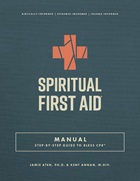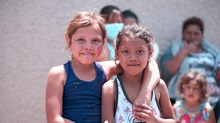Why Hope Is Essential to Transforming Extreme Poverty

What is the role of hope in escaping poverty? A quick glance at the historical approach of the aid and development industry might suggest that internal factors such as hope, aspirations, and identity play only minor roles. Development practice and research has traditionally focused on what economists call “external constraints,” the lack of a tangible resource needed to foster economic prosperity among the poor. If a region lacks infrastructure, we build roads. If people lack education, we build schools. If microenterprises lack credit, we provide microfinance loans. Economic development has oriented itself around releasing external constraints.
The problem with this approach is that real human beings don’t act just like the rational automatons depicted in economics textbooks. Indeed, this has been the motivation for the behavioral economics revolution, the subject of a recent Nobel Prize. People are not just economic creatures, but also social, psychological—and in a faith-based worldview—spiritual creatures. And what this implies is that it is important to human development to address not only external constraints, but internal constraints as well.
Understanding Poverty Traps
The table below puts poverty traps into dimensions. The columns distinguish poverty traps by whether they are individual or collective—whether the actions of others in the community have a strong influence on the actions of the individual. For example, consider a Category II trap related to schooling: studies have found that the number of other highly educated people in a community affects how much parents want to invest in education of their own children. If low education levels are pervasive, few jobs will exist that would reward investments in higher levels of education, so families continue to pull children from school early, and the lack of education perpetuates itself.
|
Classification of Development Traps |
|||
|
Trap: Constraint: |
Individual |
Collective |
|
|
External |
I. Savings, Credit, Nutrition |
II. Schooling, Investment, Environmental Issues |
|
|
Internal |
III. Hope, Aspirations, Self-Confidence |
IV. Spiritual Beliefs, Role Modeling, Customs |
|
The rows in the table distinguish poverty traps between whether they involve external or internal constraints. In a classic Category I trap, micro-businesses are unable to grow because all of their profit is used to meet a family’s basic subsistence needs. Access to credit could alleviate the external working capital constraint, but because the household has few assets to use as collateral, it is constrained from financing enterprise growth through credit as well as savings.
But there are many contexts today across the developing world in which opportunities like microcredit, or even enterprise grants, are available. However, many households still remain in poverty. Often the poor are not only encumbered by external constraints, but by internal constraints as well. These include feelings of hopelessness, low aspirations, or a lack of agency (feeling that they have little control over their situation). In such circumstances, removing the external constraints may have little effect: the internal constraints continue to bind.
In Category III traps, the internal constraint is individualized, as for example may be true with many homeless people in high-income countries. But in Category IV traps, constraint becomes collectivized across an entire community. This occurs when a general feeling of hopelessness emerges in an area, continually communicating that “nothing good ever happens here.” It may also manifest in negative stereotypes or social limits placed across caste, class, race, or gender that operate against the dreams, aspirations, and general flourishing of particular groups in the community.
Two Kinds of Hope
Different spiritual worldviews, even within Christianity itself, can impact economic development and human flourishing. Biblical Christianity balances teaching that affirms the sovereign will of God with human responsibility, accountability, and agency. In many places in the developing world, the former is emphasized to such an extent relative to the latter that it can produce a sense of fatalism. In my work in Latin America, I have often heard the common expression “si Dios quiere,” meaning “if God wills it” (it will happen). But because this phrase has been employed as a substitute for personal responsibility, many evangelicals have turned the expression to “sí, Dios quiere,” meaning “yes, God wills it” (and you should do it), emphasizing our human agency to follow God’s revealed will through taking responsible actions that foster positive outcomes.
These Spanish sayings reflect two kinds of hope, one a “wishful hope” in which we hope—and possibly pray—for something to come to pass that is outside of our scope of influence. Wishful hope is often a very good thing, especially if it is nested in a kind of over-arching hope that is able to see the good in all things. This kind of hope gives us the strength to persevere during circumstances that are out of our control. Christians are called throughout Scripture to place our ultimate hope in the love of God. The second type of hope, “aspirational hope,” emphasizes human agency. While the wishful hope of a peasant farmer might say, “I hope that it rains tomorrow,” aspirational hope says ,“I hope to fix my irrigation well tomorrow.” Both kinds of hope—“hope that” and “hope to”—are important, the latter providing motivation and the former providing resilience.
Creating Hope that Transforms
It’s important for Christians working among the poor to understand the importance of internal constraints and to teach and model a version of hope that is both developmentally and Biblically balanced. In terms of implications for how we engage global and domestic poverty, I want to emphasize three points:
First, as we seek to relieve external constraints, we need to consider when and where internal constraints may linger even when external ones have been released. A veritable mountain of new research has shown that providing added interventions that target internal constraints to flourishing. Interventions such as life coaches, counselors, cognitive behavioral therapy, Christian kindergarten for low-income children, the spiritual nurturing of children and teenagers, and adult Christian discipleship programming can strongly complement other aspects of programming or programs themselves that are focused on external constraints like education, enterprise development, or even cash transfers.
Second, most of the research I have both read and carried out with my research partners in this area suggests that interventions emphasizing hope are most effective on those who have tangible opportunities, but who initially rank low on the hope scale. For example, in our hope intervention carried out among microfinance borrowers in Oaxaca, Mexico, we found positive impacts after one year from our inspirational film and curriculum-based intervention on both hopefulness and business performance, but these impacts were strongest among the women with the lowest baseline levels of hope. In general, these are the kinds of people who are most likely to benefit from mentoring, inspiring, and encouraging.
Lastly, practitioners must root programs that nurture aspirational hope in a tangible reality. Encouraging the poor to develop aspirations for goals that common sense suggests are out of reach is not helpful, and may be damaging. Aspirational hope interventions should focus on small, achievable steps, and should be linked to any necessary interventions that can release or minimize external constraints that present obstacles.
These steps, when taken sequentially over time, guided by aspirational hope, and sustained by a broader overarching hope, provide the greatest scope for transformational economic development. Any approach to lifting individuals out of extreme poverty must begin with this deeper understanding of what holds people back—and what gives them true hope.
Bruce Wydick is Professor of Economics at the University of San Francisco, a frequent writer for CT, and author of Shrewd Samaritan: Faith, Economics and the Road to Loving our Global Neighbor (Thomas Nelson/HarperCollins).
The Better Samaritan is a part of CT's
Blog Forum. Support the work of CT.
Subscribe and get one year free.
The views of the blogger do not necessarily reflect those of Christianity Today.





















